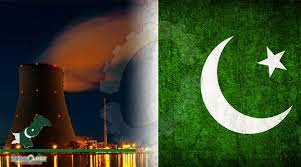By Ahyousha Khan 30 May 2022
Pakistan’s nuclear program is mired with many controversies, such as in many western literatures it is categorized as “fastest growing weapons program” or even referred as “Islamic bomb”. One of the most common misperception of about Pakistan’s nuclear program is that it is only to cater military purposes. Even if one looks at the evolution of Pakistan’s nuclear program the fact that surfaces is Pakistan made the decision to build nuclear weapons after India’s so called peaceful nuclear explosion (PNE) “Smiling Buddha” in 1974. Before 1974 although Pakistan was working to acquire nuclear technology but the program was focused on harvesting the benefits of peaceful uses of nuclear technology. Even after the decision to build nuclear deterrence against India was taken, Pakistan did not compromise the development of its civilian nuclear program. Today, Pakistan has acquired excellence in the peaceful uses of nuclear technology in the fields of energy, medicine, agriculture and biodiversity to attain the socio-economic development of Pakistan. Pakistan Atomic Energy Commission (PAEC) developed in 1956 is today operating 6 nuclear power plants with capacity of 3500MW electricity production, providing diagnosis and treatment of Cancer through 19 Atomic Energy Cancer Hospitals nationwide and has developed more than 125 crop varieties through 4 Agri Biotech Centers.
Pakistan is a developing country which is facing serious energy crisis where in summer many parts of the country face electricity blackouts for 10-12 hours and in winter domestic users and industries faced the low gas pressure or low supply. According to the reports of Economic Survey of Pakistan during that time Pakistan was losing around USD 4.8 billion of Gross Domestic Production annually for five consistent years. Resultantly, initially to counter its energy crisis Pakistan started importing oil, coal, and recently LNG, which caused higher prices of energy sources in Pakistan. Other than a cause of inflation and higher prices thermal energy sources in any energy mix are also massive source of climate change. In recent years, Pakistan has taken a lot of steps to not only counter its energy crisis but also to diversify its energy mix. In this regards, according to the most recent estimates of April 2020, Pakistan’s installed capacity of electricity generation increased by 7.5 % by reaching 35,972 megawatts in comparison to 33,452MW in April 2019. Moreover, to diversify its energy mix, Pakistan also increased reliance on hydro sources of power and increased hydro-power generation by nearly 5%. Another important factor with a lot of potential to tap is “nuclear power”, in year 2020 Pakistan increased energy generation through nuclear power plants from 3% to 8.2 % in its overall energy mix. Other than renewable energy sources like Hydro-power and Solar, Wind, and Bagasse-Based Power options, for future energy generation sources Pakistan should seriously pursue nuclear energy for achieving energy security. As even today the biggest energy source for country is thermal power, which means reliance on natural gas and import of oil and LPG that are already causing high inflation and energy crisis (especially in winter of 2021) in country.
Other than nuclear energy other areas where nuclear technology is playing its positive role in Pakistan is in agriculture. Along with the help of the IAEA, Pakistan has developed many facilities for the advancement of agriculture and to eliminate malnutrition and hunger from the country while simultaneously achieve the UNSDGs. In this regard Pakistan has adopted various irradiation techniques to increase the shelf life of food. Moreover, Pakistan has also developed 98- new high yielding and stress tolerant crops by using nuclear technology to fight the consequences of climatic changes. To ensure the availability of clean water for drinking and growing crops Pakistan is collaborating with IAEA. Furthermore, Pakistan has also built laboratories by collaborating with IAEA for mass breeding of insects that fight pests attacking the crops and thus the use of pesticides is decreased.
In Pakistan, nuclear technology has significant use in the field of medical science especially for the diagnosis and treatment of cancer disease. In this regard, over the years, 18 cancer treatment centers have been developed by PAEC where nearly 0.7 million cancer patients have been treated to date. This counts for almost 80% of the total cancer patients from all over the country.
These developments of Pakistan in utilizing the peaceful uses of nuclear technology are mostly ignored fact. However, Pakistan is consistently pursuing the socio-economic development goals by utilizing its technological prowess in field of nuclear sciences.

